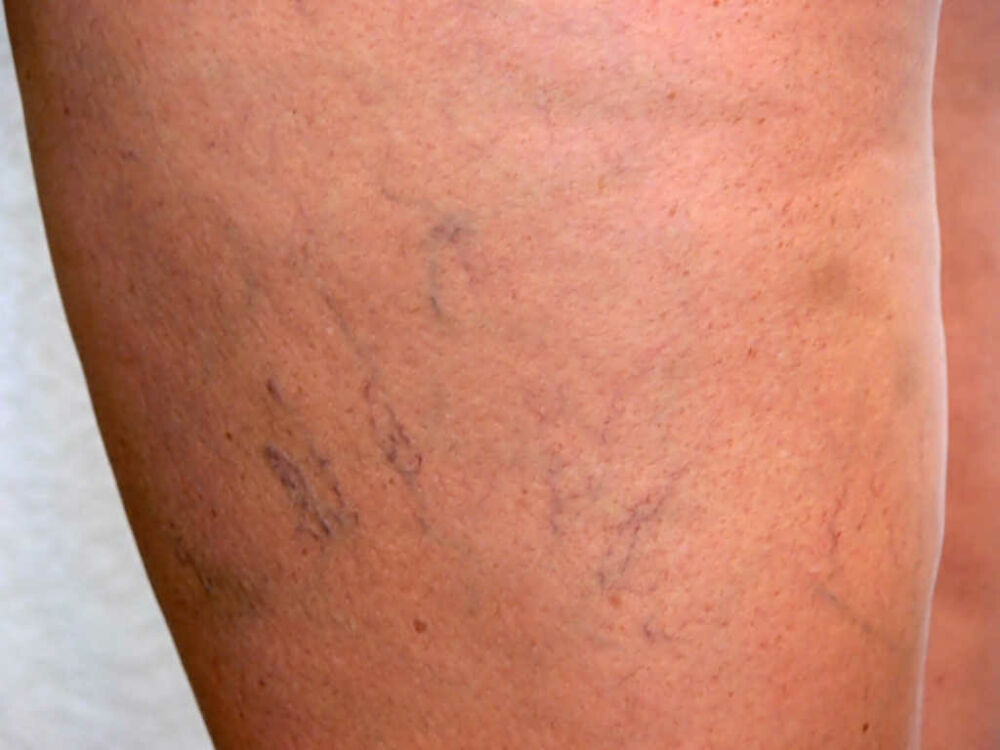
Are Those Varicose Veins or Spider Veins?
Though caused by the same venous disorder, varicose veins and spider veins have some distinct differences.

Medically reviewed by Eddie A. Fernandez, MD, RPVI, on February 25, 2025
Spider veins are a common venous condition characterized by small, dilated blood vessels near the skin’s surface. These vessels typically manifest as red, purple, or blue lines forming web-like or branching patterns, primarily on the legs and face. Although they are generally considered a cosmetic concern, spider veins can sometimes signal underlying venous problems or lead to more serious complications if left untreated.
Keep reading as we clarify spider veins, including their causes, potential risk factors, and management strategies. If you have concerns about your venous health, the board-certified physicians at Center for Vein Restoration (CVR) can provide a personalized consultation and treatment approach to give you peace of mind as you begin your journey to better health.
Call 240-965-3915 to speak to a Patient Services Representative, or use our SCHEDULING PORTAL to book your consultation online at the clinic nearest you.

Spider veins form when small blood vessels, often in the dermal layer of the skin, become enlarged. These vessels may form distinct patterns such as starbursts, tree branches, or webs. While they are typically seen on the legs and face, they can appear on any part of the body.
Spider veins are often deemed a cosmetic concern due to their appearance and the fact that they are usually harmless health-wise. However, sometimes their presence may indicate a problem with circulation or underlying venous insufficiency, a condition in which the veins struggle to return blood to the heart properly.
Several factors may contribute to the enlargement of the small vessels under the skin’s surface, resulting in spider veins.
Causes for spider veins include:
In most cases, spider veins are simply a cosmetic issue; they are not dangerous and do not pose a serious health risk. However, we mentioned that they can sometimes indicate underlying circulatory problems.
Let’s break down the differences:
While spider veins don’t usually cause physical pain, they may cause aesthetic changes. Many patients seek treatment due to the appearance of their spider veins. Some people may also experience mild discomfort or itching around the affected veins.
Spider veins can sometimes be an early warning sign of chronic venous insufficiency, which occurs when the valves within the veins fail to function properly, resulting in blood pooling in the lower extremities. While spider veins do not directly cause venous insufficiency, they may be an early indicator of more severe venous disease, which causes symptoms such as leg heaviness, aching, cramping, and swelling.
If left unaddressed, untreated venous insufficiency can progress to more severe conditions, such as varicose veins or even chronic venous ulcers, as per the Cleveland Clinic.
We’ve clarified that spider veins are rarely dangerous, but there are times when seeking medical advice is crucial. If you experience pain, swelling, or changes in the appearance of your spider veins or notice symptoms such as leg heaviness, cramping, or unexplained bleeding, it's important to seek medical evaluation. These could indicate underlying venous insufficiency or other vascular issues that may require urgent treatment.
If spider veins are causing cosmetic concerns or discomfort, there are several ways to improve their appearance and any associated symptoms:

Spider veins are typically not dangerous and do not pose significant health risks for most people. However, they may indicate underlying venous insufficiency, particularly in individuals with additional symptoms of leg swelling, pain, or fatigue. While most cases are non-threatening, it is important for patients to seek a professional evaluation if they experience any unusual symptoms or if the appearance of spider veins worsens over time.
With the right treatment, spider veins can be managed effectively, allowing you to enjoy improved comfort and appearance. Start your path to proven vein health by scheduling a consultation with one of our board-certified vein physicians.
